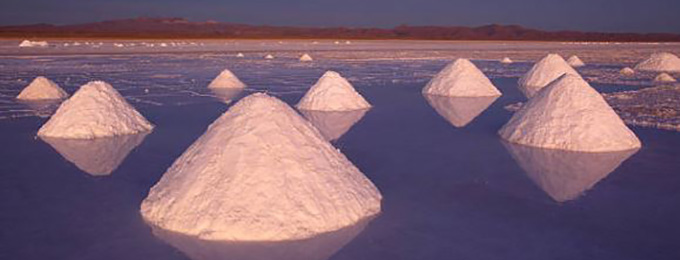The European Commission’s critical raw materials action plan foresees investments in research, innovation and education to create more sustainability.
On 03 September 2020, the European Commission (EC) published a package on raw materials, including the updated 2020 List of Critical Raw Materials, a foresight study for Strategic Technologies and Sectors and an Action Plan on Critical Raw Materials. The package offers an overview of Europe’s critical raw materials supply, current and future challenges and ways to reduce dependency and improve sustainability. These analyses were conducted in the light of the EC’s main priorities, the green and digital transitions. Therefore, the raw materials package relates closely to the European Green Deal and the EU Circular Economy Action Plan. The foresight study analyses strategic technologies and sectors from the 2030 and 2050 perspectives.
Since 2011, the list of critical raw materials has been updated every three years and this year’s list includes for the first time bauxite, strontium, titanium, and lithium. The assessment of the different raw materials is based on new developments and outlooks. Thus, the shift to e-mobility explains the new prominent role of lithium. The EC estimates that the EU would need around 18 times more lithium and 5 times more cobalt in 2030, and almost 60 times more lithium and 15 times more cobalt in 2050 for electric vehicle batteries and energy storage alone, compared to the current supply to the whole EU economy. The action plan concludes: “If not addressed, this increase in demand may lead to supply issues”. In addition, the analyses show that the supply of many critical raw materials is highly concentrated. In the case of rare earth elements, for instance, 98% of the EU’s supply comes from China. In other cases, the EU relies on single companies for its entire supply.
The updated critical raw materials list offers an outlook on possible future developments, provides a tool for policy development, and sets out in an action plan that delineates objectives: Diversify supply, improve resource efficiency and circularity while promoting responsible sourcing worldwide. To achieve these goals, the EC outlines concrete actions, among them the establishment of a European Raw Materials Alliance. This new alliance, launched already on 29 September, will bring together all relevant stakeholders and allow for a focus on increasing EU resilience, for instance in the rare earth and magnet value chains that are vital to EU industrial ecosystems, such as renewable energy, defense, and space. Research, innovation and education on critical raw materials already play a role under current programmes, such as Horizon 2020 and Erasmus+. The action plan identifies relevant future R&I investment needs in new mining technologies, improving waste reprocessing to avoid valuable materials ending up in landfill, and in advanced materials and substitution. These needs are to be met using Horizon Europe, the European Regional Development Fund as well as national R&I programmes. The EC plans to develop and implement the action plan together with the Member States as well with the European Innovation Partnership on Raw Materials and the European Institute of Innovation and Technology’s “EIT RawMaterials”, among others.
The EC proposes to tackle the transition to clean energy together with an improvement of domestic European critical raw materials sourcing. Thus, former coal producing regions could shift to critical raw materials mining, a process Member States could embark on supported through just transition plans. The action plan concludes that “many of the mining and engineering skills are transferable to the exploitation of metals and minerals, often in the same regions.” The EC states that the updated EU Skills Agenda could support this adaptation as well (see SwissCore article). In other cases, the EC points out, Europe lacks skills in the processing of critical raw materials. Certain materials mined on the continent, such as lithium, currently have to be processed overseas. Thus, Europe needs to invest in developing the relevant skills at home, as “the technologies, capabilities and skills in refining and metallurgy are a crucial link in the value chain.” Another important action focuses on the mapping of potential supply of critical raw materials from EU stocks and wastes. This includes deploying the use of the EU’s earth-observation programme Copernicus to improve resource exploration, operations, and post-closure environmental management.

